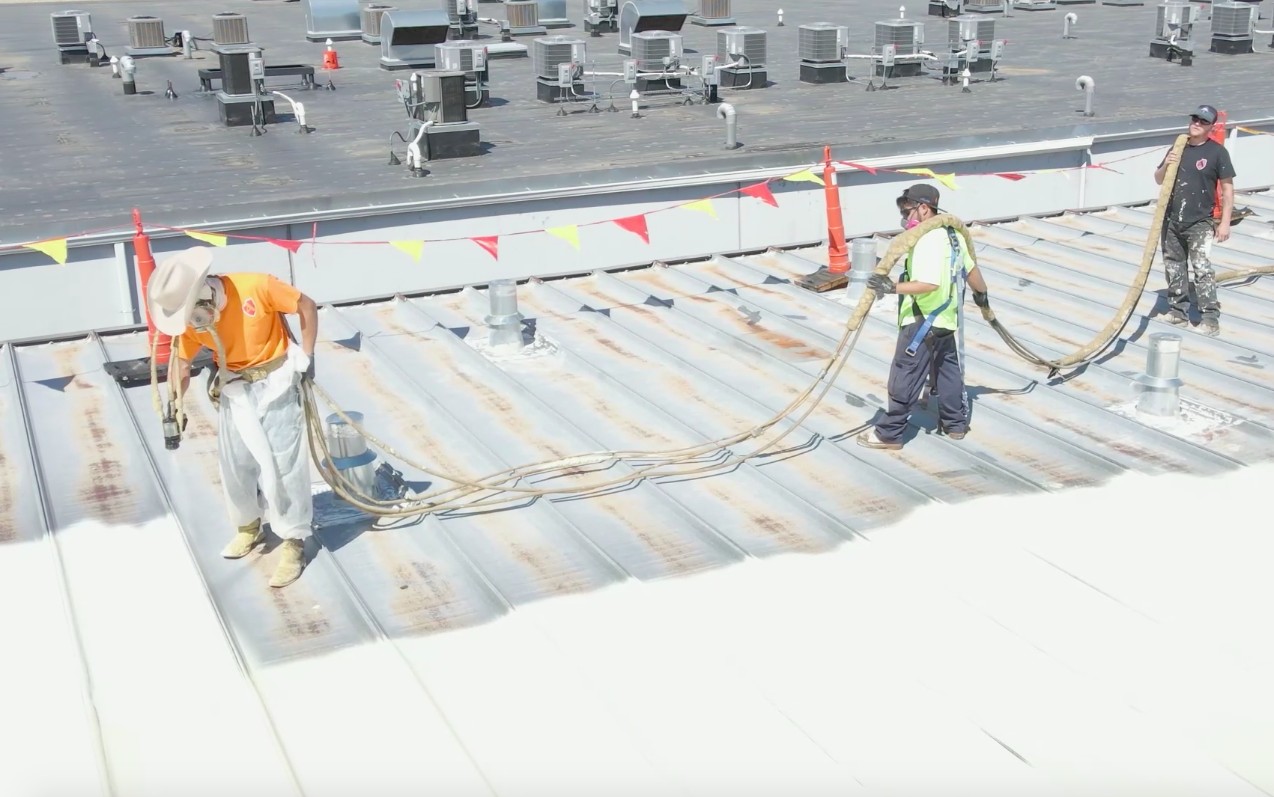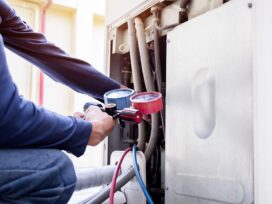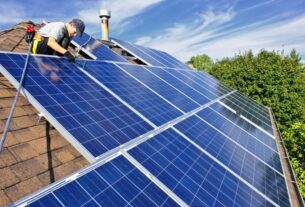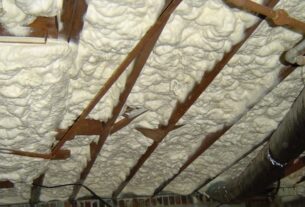
Understanding the Lifespan of Foam Roofs: What’s the Average Duration?
Foam roofs, also known as SPF (Spray Polyurethane Foam) roofs, have gained popularity in recent years due to their durability, energy efficiency, and cost-effectiveness. However, like any other roofing material, foam roofs have a finite lifespan and will eventually need to be replaced. In this blog post, we will explore the average duration of foam roofs and the factors that can affect their lifespan. We will also discuss the signs of deterioration in foam roofs and provide tips on how to extend their lifespan through proper maintenance and care.
Factors Affecting the Lifespan of Foam Roofs
There are several critical factors that can influence the lifespan of foam roofs. These factors include:
Climate and Weather Conditions
One of the most significant factors that can impact the lifespan of foam roofs is the climate and weather conditions in the area where the roof is installed. Foam roofs are designed to withstand various weather elements, including rain, wind, snow, and extreme temperature fluctuations. However, prolonged exposure to severe weather conditions can accelerate the wear and tear of the roof, leading to a shorter lifespan. In regions with harsh climates, such as places with high temperatures, intense sunlight, or frequent hailstorms, foam roofs may experience faster deterioration. Additionally, areas with high humidity levels can promote the growth of mold, mildew, and algae, which can also contribute to the deterioration of foam roofs if not addressed promptly.
Installation Quality
The quality of the foam roof installation plays a crucial role in determining its lifespan. A properly installed foam roof will have a longer lifespan compared to a poorly installed one. It is essential to hire a professional and experienced roofing contractor who specializes in foam roof installations to ensure that the roof is installed correctly. During the installation process, it is crucial to pay attention to details such as proper surface preparation, correct mixing and application of the foam, and adequate thickness of the foam layer. Any errors or shortcuts during the installation can compromise the integrity of the roof and lead to premature deterioration.
Foot Traffic and Maintenance Frequency
Foam roofs are not designed to withstand heavy foot traffic. Continuous walking or excessive weight on the roof, such as from HVAC technicians or maintenance personnel, can cause damage to the foam layer and reduce its lifespan. It is recommended to limit foot traffic on foam roofs and only allow trained professionals to access the roof when necessary. Regular maintenance is also vital for the longevity of foam roofs.
Exposure to UV Radiation and Chemicals
Foam roofs are susceptible to damage caused by exposure to ultraviolet (UV) radiation from the sun. Over time, UV rays can break down the chemical structure of the foam, leading to cracks, peeling, and reduced insulation properties. To counteract the effects of UV radiation, foam roofs are typically coated with a protective layer, such as elastomeric coatings, that can reflect the sunlight and minimize the damage. Chemicals, such as certain cleaning agents or solvents, can also have a detrimental effect on foam roofs. It is crucial to avoid using harsh chemicals or abrasive cleaning methods that can cause damage to the foam layer. Instead, mild detergents and soft brushes should be used for cleaning purposes.
Maintenance and Care for Foam Roofs
To ensure that your foam roof reaches its maximum lifespan, proper maintenance and care are essential. Here are some maintenance tips to consider: – Regularly inspect the roof for any signs of damage, such as cracks, blisters, or peeling. Address these issues promptly to prevent further deterioration. – Clean the roof regularly to remove debris and prevent moisture buildup. – Trim any overhanging branches or vegetation near the roof to minimize the risk of damage from falling branches or trapped moisture. – Schedule professional roof inspections and maintenance at least twice a year. – Avoid walking or placing heavy objects on the roof unless absolutely necessary. – Use mild detergents and soft brushes for cleaning purposes, avoiding harsh chemicals or abrasive methods.
The Average Lifespan of Foam Roofs
The average lifespan of foam roofs can vary depending on the factors mentioned earlier. In general, a well-maintained and properly installed foam roof can last anywhere between 20 to 30 years. However, some foam roofs have been known to last even longer with proper care and maintenance. It is important to note that the lifespan of a foam roof can be significantly influenced by the factors discussed earlier, including climate, installation quality, foot traffic, and exposure to UV radiation and chemicals. Therefore, it is essential to take these factors into consideration when evaluating the projected lifespan of a foam roof.
Signs of Deterioration in Foam Roofs
Over time, foam roofs may show signs of deterioration that indicate the need for repairs or replacement. Here are some common signs to look out for:
Cracking and Peeling of Foam Layers
Visible cracks or peeling in the foam layer of a roof are clear signs that the structural integrity is beginning to decline. These indicators are important to pay attention to, as they can be early warning signs of potential problems. When cracks form in the foam layer, they create pathways for water to infiltrate, which can have detrimental effects on the overall roofing system. The presence of cracks in the foam layer not only compromises the roof’s ability to provide protection, but it also paves the way for further damage. Water infiltration can seep into the underlying layers of the roof, causing them to weaken over time. This can lead to issues such as mold growth, insulation damage, and even structural problems if left unaddressed.
Water Leakage and Moisture Problems
If you notice water stains on your ceiling or attic, it is important to take immediate action as it could signal possible roof damage. It is crucial to address any moisture issues promptly to prevent the growth of mold and maintain the effectiveness of your insulation. Neglecting these issues can lead to further damage and potentially higher repair costs in the long run.
Loss of Insulation Ability
As foam roofs gradually age, there is a possibility of their insulation properties diminishing over time. One of the indicators of this decline can be observed through increased heat transfer, which in turn can lead to higher energy costs for the building. These signs serve as a reminder that regular monitoring and maintenance of foam roofs are essential to ensure optimal insulation performance.
Appearance of Blisters or Pitting
Blisters or pitting that appear on the surface of a foam roof serve as visible signs of deterioration. It’s crucial to address these areas promptly as they have the potential to trap moisture, which can further exacerbate roof damage. By attending to these signs of wear and tear, homeowners can help prolong the lifespan of their foam roofs and mitigate potential problems.
Increased Energy Costs
If you have recently noticed a spike in your energy bills, it may be an indication that your foam roof is no longer effectively insulating your home. This inadequate insulation can cause your energy consumption to increase, putting a strain on your energy usage and your wallet. It is important to address this issue promptly in order to restore energy efficiency and potentially reduce your monthly utility costs.
Extending the Lifespan of Foam Roofs
Foam roofs, like any other roofing material, have a limited lifespan. However, there are several steps you can take to extend their longevity and ensure that they perform optimally for years to come. First and foremost, regular inspections are essential. By inspecting your foam roof on a regular basis, you can identify any signs of damage and address them promptly.
Additionally, it’s important to avoid walking on the foam roof unless absolutely necessary. Foam roofs can be easily damaged by excessive foot traffic, so it’s best to limit access to the roof and only walk on it when absolutely necessary. This simple precaution can significantly extend the lifespan of your foam roof. Scheduling professional roof inspections and maintenance at least twice a year is another vital step.
In conclusion, by following these maintenance practices and taking proactive measures, you can maximize the lifespan of your foam roof. Remember, proper care and regular maintenance are key to extending the lifespan of any roofing material. By investing time and effort into maintaining your foam roof, you can ensure it performs well and protects your home for years to come.
Publisher’s Details:
Atlas Roofing
22731 Schoolcraft St, West Hills, CA 91307, United States
(866) 343-0686
atlasroofingpro.com
info@atlasroofingpro.com
Regular roof inspections are crucial for extending the lifespan of your foam roof. Check out Atlas Roofing’s guide on the Importance of Quality Roof Inspections for expert insights. If need professional new roof installation in Santa Clarita, CA, Atlas Roofing provides top-notch services. Invest in your roof’s longevity by taking proactive maintenance steps and ensuring it protects your home for years to come.







